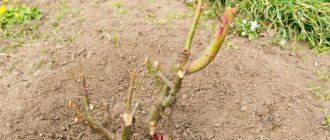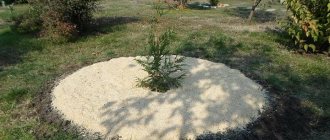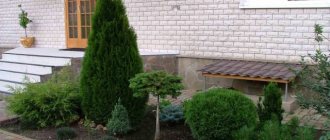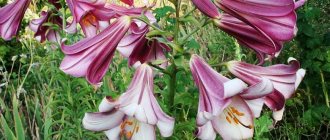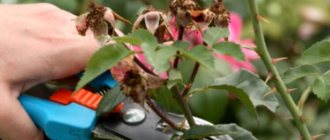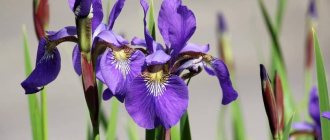Rose is the queen of the garden, which means she needs care appropriate to her position. In other words, without special care on your part, the beauty will not give you pleasure - it will bloom magnificently and for a long time. Therefore, it is very important to properly care for roses throughout the entire period, including in spring, when the plant is just waking up and especially needs additional nutrition.
Read on in our article to learn how to properly feed and care for roses in the spring so that they bloom magnificently and for a long time.
Timing for feeding roses in spring
In order for gardening to be beneficial, you need to know when and how much to apply fertilizer for roses in the spring. Following the sequence of fertilizing helps to have a positive effect on the plant at different phases of development.
Pest Control Articles
How to fight whitefly on cucumbers
How to fight a mole cricket in the garden
How to deal with wireworms using folk remedies
Slugs in the garden? How to deal with slugs
Third feeding
The third spring feeding of roses is carried out on the eve of budding, usually three weeks after the second feeding. But the timing here is not clear. Now you should completely eliminate nitrogen fertilizers, otherwise the flowers will be small and the green mass will grow even larger.
Take 10 g of potassium sulfate and superphosphate per bucket of water, add a liter jar of this essential nutrient under each bush.
In general, preference during this period is given to potassium-phosphorus fertilizers. Phosphorus is involved in the formation of new buds, and potassium is responsible for beauty - color saturation and helps roses to bloom for a long time. The plant should receive magnesium during the third feeding, as it stimulates the appearance of new ovaries. Microelements such as manganese and boron, which strengthen the plant’s immunity, are of particular importance.
It is recommended to use mineral fertilizers, which are sold in specialized stores in ready-made form. Which one to use is up to you:
- “Kemira” (granules, add 30-40 g per sq.m.);
- “Agricola” (dilute 10 ml per liter of water, a liter jar for each bush);
- “Glinworld” “(granules, 25 g for each plant);
- “Florovit” (similar recipe).
During the third fertilizing, ash is added, which also acts as a soil deoxidizer. Scatter one glass of fertilizer around the bush. You can also dilute a liter jar of ash in a bucket of water and water at the rate of one liter per plant.
Schedule for foliar feeding of roses:
- The first feeding of roses after winter is carried out after the snow has completely melted. To do this, add ammonium nitrate to the soil in early spring.
- When landing. When planting roses in open ground in spring, it is recommended to fertilize with growth stimulants and preparations that stimulate root growth (for example, “Tsitovit”, “Zircon”, “Kornevin”). Also, according to the recommendations of experienced gardeners, when planting roses at the bottom of the planting hole, you need to pour a layer of humus and soil mixed with 15 grams of potassium salt and 20 grams of superphosphate as fertilizer.
- During the period when the leaves bloom (depending on the regional climate - approximately the 3rd decade of March - the 1st decade of May), use liquid fertilizers for roses in the garden.
- Before setting buds. After this, apply fertilizer approximately every 2 weeks until the buds set, while paying attention to the general condition of the flowers.
- It is recommended to carry out the last spring fertilizing for flowers before budding using phosphorus, potassium, nitrogen fertilizers in the following ratio - 2:1:1
Important! In addition to spring root feeding of roses, apply foliar feeding every ten days during spring.
What types of fertilizers are there for garden roses?
This procedure has many nuances and features. And especially novice flower growers are lost in front of the numerous fertilizers for roses in the spring, in their names. Let's figure out what kind of fertilizers there are for seasonal feeding of the main beauties of the garden.
Organic fertilizers
Organic fertilizers for roses increase soil fertility in the garden, help attract worms, and also reduce the number of weeds. For spring feeding, you can use almost all types of organic fertilizers.
Bird droppings
Chicken manure is a useful and fast-acting fertilizer. However, it can burn the roots, so the dosage and concentration should not be exceeded. To obtain an infusion from bird droppings, you need to dilute the droppings with water (if it is fresh - in a ratio of 1:20, if the droppings are old - 1:10). After dilution, the substance should be infused for five days. After the expiration date, you need to dilute the infused mixture with water in a ratio of 1:3. It is recommended to thoroughly moisten the bushes with plain water before applying.
Video: fertilizing roses with bird droppings.
Mullein
Cow dung is a valuable fertilizer that is one of the best for roses. It contains many substances and microelements useful for the garden. However, fresh manure often, along with useful elements, also contains pathogens of various diseases and pests. But thanks to the fermentation process when preparing the infusion, they die, which makes this organic fertilizer safe.
How to make a high-quality and healthy infusion that garden roses will love? The nutrient solution is prepared in the same way as the previous fertilizer; first you need to dilute the manure with water (1:10) and leave for a week. After this, move with water in a ratio of 1:2. If desired, you can add a little ash to the mixture.
Note! It is highly not recommended to use fresh manure, as it can burn the roots of the bush. It is better to use rotted manure.
Ash
Ash is a very affordable and profitable fertilizer, which is very useful for flowers during budding. To prepare the solution, mix 150 grams of the substance with 10 liters of clean water.
After adding ash, it is necessary to loosen and mulch the soil under the bushes.
Video: how to prepare an infusion of ash.
Mineral fertilizers
They have a beneficial effect on the growth and development of the plant. Mineral fertilizers for roses can be in the following formats: in the form of dry powder, in granular, tablet form (for dissolution and subsequent spraying), in liquid form.
The following mineral fertilizers are distinguished:
- Nitrogen - urea, ammonium nitrate . The preparations ensure active growth of foliage and shoots. Nitrogen fertilizers for garden roses stimulate the formation of high-quality and healthy green mass. It is recommended to apply such fertilizer in the spring, since in the fall they can reduce the winter hardiness of flowers. However, it is important to remember that excess nitrogen fertilizer can lead to delayed flowering and a decrease in the number of inflorescences.
- Potash - potassium sulfate, potassium chloride, potassium sulfate, potassium magnesium. Such fertilizers help the bush retain moisture in the shoots and leaves, help increase the frost resistance of the bushes, and improve the color of the plant. Potassium fertilizers applied in the spring also affect the formation of rose buds.
- Phosphorus - popular preparations based on this substance include superphosphate and ammophos. Mineral preparations of this group contribute to future abundant flowering. Phosphorus plays an important role in stimulating generous flowering; the substance has a direct effect on the number and size of buds, and has a positive effect on the root system. But it is not recommended to apply only such preparations, because you can feed roses with any other effective fertilizers that have a wonderful effect.
Note! When feeding roses in spring with mineral fertilizers, a balance should be maintained: before flowering, it is important to reduce the amount of nitrogen fertilizers and increase the amount of potassium-phosphorus fertilizers (they can be used both as root and foliar fertilizer).
Complex fertilizers
An important advantage of using complex fertilizers for roses is simplicity and convenience. High-quality complex preparations will help increase the number of buds, their size and help speed up the setting of buds. Complex fertilizers will also help make the color of plants more saturated. For example, the following complex preparations are popular:
- Pocon - this long-acting drug is recommended to be applied twice a month (long-lasting Pocon is diluted in a proportion of 10 milliliters per liter of water).
- Zircon - one foliar feeding should be done before budding (it is recommended to dilute 1 milliliter per 2 liters of water).
- Agricola-Aqua - if you want to carry out foliar fertilizing, it is recommended to apply fertilizer once every two weeks (5 milliliters per 2 liters of water), if root fertilizing, then once a week or every 10 days (5 milliliters per liter of water).
Note! It is not recommended to fertilize roses that were transplanted less than two weeks ago with complex preparations.
Folk remedies
Fertilizing with folk remedies is not inferior in popularity and effectiveness to organic and mineral fertilizers and is used for various plants and flowers, including roses. The popularity of this method can be explained by the availability, cheapness and safety of the funds.
The following folk remedies are used for spring feeding:
- Yeast is an excellent fertilizer for various flowers and plants; it increases the number of beneficial bacteria in the soil and has a positive effect on the plant. To prepare a product for feeding roses in spring, you must follow the following recipe: mix thoroughly 20 grams of yeast (dry or raw), 2 tablespoons of sugar and 2 liters of warm water. The resulting yeast mixture should be left in a warm place for several hours. Then you should mix the composition with water in a ratio of 1:10.
- Green infusion is a very convenient and profitable option, because you don’t need to buy any ingredients to prepare the fertilizer. You can find everything you need in your summer cottage or garden. It is necessary to collect any weed (before insemination!), finely chop it, place it in a container and fill it with water. After about ten days of fermentation, the green infusion should be stirred in a ratio of 1:10.
- Onion peels not only saturate the plant with useful substances, but protect them from some diseases and pests. To prepare such a folk remedy, add 100 grams of husks to water and boil for about 15 minutes. After this, you need to let the broth sit for a couple of hours.
- Nettle infusion is a budget-friendly, effective and environmentally friendly fertilizer. The plant should be placed in a 10-liter bucket, filled with water and left for 5 days in a warm place. After this, the infusion is mixed with water in a 1:1 ratio.
Why do you need early spring feeding of roses?
By the beginning of March, along with the melting snow and prolonged rains that occur during this period, many useful elements are washed out of the soil. A plant that has survived the winter experiences an acute nutrient deficiency. He needs them to:
1. Grow and develop normally.
2. Increase immunity that has decreased over the winter.
3. Bloom long, brightly and luxuriantly all summer.
4. Resists diseases and pests.
In the spring, depending on the variety, the rose should receive three or four feedings with organic and mineral fertilizers in sufficient quantities.
Rules for applying spring fertilizing to roses
Waking up from hibernation in the spring, the plant begins rapid growth: shoots actively increase in size, leaves unfold, roots begin to intensively absorb moisture and nutrients from the soil. If at this moment the rose experiences hunger, its growth stops, flowering is delayed, and the number and size of buds decreases.
Important! Applying fertilizers at the root and spraying the rose tops with a nutritious composition strengthens its immunity, helps to resist diseases and pest invasions.
Basic rules for spring feeding of the rose garden.
- The first feeding of a rose always begins with nitrogen. It is necessary for the plant to awaken and actively grow the vegetative mass.
- It is preferable to add nitrogen in the form of organic matter when the snow has completely cleared from the garden bed and the rose garden has been cleared of its cover. The roots begin to work and absorb food when the soil temperature is at least +9 degrees.
- In the standard mode, only healthy bushes are fed; poorly overwintered, weakened roses require special care. The plants are first treated, then gentle doses of fertilizer are applied to the leaves so as not to overload the weakened roots.
- Roses planted last season do not need to be fed in the spring, provided that the planting hole is thoroughly filled with fertilizers.
- If the soil in the rose garden is covered with decorative mulch, the fertilizer solution is poured onto the areas cleared of covering. For an adult rose bush, it is enough to rake the mulch in 2-3 places, 20-40 cm away from the center of the bush.
- The first feeding of roses that have not yet released their leaves is carried out using the root method, pouring the nutrient solution onto the soil. Subsequent application of fertilizing is preferably carried out by spraying. Through the leaf apparatus, the plant absorbs nutrition faster.
Experienced gardeners recommend fertilizing the rose garden at least 4 times before flowering begins:
- after the snow melts and the soil warms up;
- at the moment of leaf opening;
- during the bud setting phase;
- at the moment of filling the buds to the size of a pea.
The number of times you need to feed a flower garden can be reduced by applying long-acting granular fertilizer under the roses in the spring. Gradually dissolving in the soil, the granules will give the roots the nutrients the plant needs.
How to properly feed roses in spring
Basic recommendations for proper fertilization of roses:
- Before applying fertilizer, along the diameter of the bush (or better even a little more, at least retreating by 15-20 centimeters), you need to make a circular depression, so to speak, a groove (hole). And after applying fertilizing, you can lightly sprinkle the wet holes with humus or compost (this will be both mulch and additional nutrition).
- Before feeding roses, it is recommended to first water the bushes with plain water, because... It is always necessary to fertilize on moist soil, especially with mineral fertilizers.
By the way! You can water the day or 1-2 hours before applying liquid fertilizer.
- It is advisable to fertilize in the morning or evening, but not at noon, when the sun is at its zenith.
- As a rule, root fertilizing is done in the spring (in liquid form, but you can also do it in dry form - scatter the granules into the holes and fill them in, the fertilizers will gradually dissolve during watering or rain). But in the summer you can also perform foliar feeding (on the leaves).
Important! It is believed that foliar (leaf) feeding is especially effective when the plant is in dire need of some microelements, for example, in the case of chlorosis.
However! Foliar feeding cannot completely replace root feeding.
Feeding seedlings after planting in spring
When planting a rose seedling, the hole is filled with fertilizers according to the following scheme:
- humus or rotted manure 5 kg;
- wood ash 1 cup;
- complex mineral fertilizer 2 tbsp. spoons.
All components are mixed with soil, and a rose is planted in this mixture. This amount of nutrients is enough for the development of the plant until next spring. Additionally, the rose is not fed.
In spring, the feeding scheme for young roses is no different from fertilizing adult bushes.
Organic fertilizer for roses in spring
Often gardeners get too carried away with complex fertilizing, forgetting about folk remedies. However, it is organic fertilizers that most fully enrich the soil, acting much more gently. Organic matter reduces the number of weeds and attracts earthworms, which loosen the soil and enrich it with oxygen.
The best effect can be achieved by simultaneous use of organic and inorganic fertilizers. Mineral supplements are the main nutrition, while organic matter helps them to be absorbed. Experienced gardeners first apply mineral fertilizers and then water with organic ones.
Use:
- Chicken droppings. It is recommended to carry out this feeding twice a year: in early spring, during the period of active development, and during flowering. Chicken manure can burn the roots, so do not exceed the dosage or apply pure manure to the soil. To prepare a nutrient solution, you need to dilute fresh droppings with water in a ratio of 1:20, and rotted litter - 1:10 and leave to infuse for five days. Mix the resulting infusion with water again in a ratio of 1:3.
- Cow dung. To prepare the solution, fill it with water in a ratio of 1:10. Leave for a week to infuse, and then dilute again with water in a ratio of 1:2. It is better to start feeding roses when it gets warm. In cold weather, nutrients are poorly absorbed.
- Weed infusion. Such fertilizers can be used as an additional source of organic matter. Fill a bucket or any other container 75% with finely chopped tops, cut weeds or any other greenery. Add two to three tablespoons of soda ash and pour water into a container: 2/3 of the total volume. Leave for at least a week until the infusion is thoroughly fermented. Strain and dilute with water in a ratio of 3:10. Spray the rose bushes with the resulting liquid. The infusion cannot be prepared during insemination of weeds.
- Peat and humus. Fertilizing with peat or compost is done in the fall, before covering the plants for the winter. Spread organic matter around the bushes, this will speed up the development of the root system next year.
Articles about indoor and ornamental plants
Chinese rose or Hibiscus (flower of death): home care
How to grow gloxinia from seeds at home
How to grow bonsai from seeds at home
How to grow a date palm from a seed at home
Folk remedies
Classic folk recipes for feeding roses have been known for centuries, dating back to the times when the concept of specialized fertilizers did not exist in principle. Like any organic product, such products are completely natural and environmentally friendly!
Feeding roses with weeds
Herbal infusion is an effective aromatic alternative to classic organics. To prepare one third, fill the bucket with grass, tops and weeds, add 2 tablespoons of soda ash, a share of water and wait until the composition ferments. Strain the liquid, dilute with water 3:10, ready!
Feeding with ash
Ash is another organic fertilizer for any garden seedlings. It is especially rich in potassium, and also contains magnesium, iron, calcium, sulfur and phosphorus. If you want to embed dry ash into the soil, you need about 200 g per square. Or you can prepare a solution for watering: 30 g per bucket of water.
Feeding roses with yeast
Yeast feeding of roses is a good home-made alternative to store-bought potassium-phosphorus mixtures. Yeast ensures lush flowering and activates metabolic processes. In a bucket of water, dilute 10 g of dry yeast, 2 tablespoons of sugar, let it brew for 2 hours and dilute again with water 1:5.
Feeding with food waste
Gardeners have been making compost from food waste for centuries, especially now there are even special machines for this. Previously, organic matter was closed in a dark box and earthworms were put in there. The content of humates in food waste is higher than in rotted manure.
Fertilizing roses with ready-made complex fertilizers
There are special fertilizers created specifically for roses, taking into account which elements they need most. Usually they are applied in the form of a solution at the root or sprayed on the foliage. They have a beneficial effect on the development of the bush, as well as on its flowering.
Such fertilizers are produced by many companies and are known under the following brand names:
The solution should be prepared according to the instructions for each fertilizer. But usually, if we are talking about the crystalline form, you need to take 15-20 g of the drug per bucket.
Important! Complex mineral fertilizers for roses contain nitrogen. Therefore, it is not advisable to use them for autumn feeding.
Tips for beginner gardeners:
- Apply liquid fertilizers in the late evening. This is especially true for foliar feeding.
- For foliar fertilizing, use low concentration fertilizer solutions (3-4 times less than for root fertilizing).
- A solution of mineral fertilizers can be poured under the roots only after preliminary irrigation of the soil.
- Do not add more fertilizer than necessary. This will not make the plant grow more actively: an excess of minerals is even more dangerous for roses than their deficiency.
Roses are varied, and all of them are amazingly beautiful. But you can enjoy their beauty only when the plant is healthy and well-nourished. Therefore, feed the bush in time and do not ignore feeding in early spring and late autumn. After all, how the rose will bloom largely depends on them.
Mineral fertilizers
In spring, roses are fertilized with mineral fertilizers containing increased amounts of nitrogen and other elements.
Urea
This fertilizer contains the largest amount of nitrogen - 46%. Roses can be fed with urea at the root or treated with the above-ground part. For root feeding, you can use dry urea. However, it should be remembered that nitrogen evaporates from urea granules in the air, so simply scattering the fertilizer under the bush will be ineffective. Urea granules are dropped into grooves dug at a distance of 20 cm from the stem. In this case, the consumption will be 1 matchbox per 1 m2.
Another option for adding urea is an aqueous solution. 1 tbsp. urea is diluted in 10 liters of water and the bushes are watered, using 1 liter of working fluid for each. During nitrogen starvation, roses are sprayed over the leaves with a urea solution. To do this, add 4 g of fertilizer per 1 liter of water.
Ammonium nitrate
This water-soluble fertilizer contains 26 to 33% nitrogen and 14% sulfur. Most often, gardeners use ammonium nitrate in a mixture with phosphate and potassium fertilizers. To prepare the working fluid, 1 tbsp. saltpeter is dissolved in a bucket of water. One bush consumes from 5 to 7 liters of solution. The first feeding is carried out after pruning, the second - 2...3 weeks after the first.
A good effect when growing roses is shown by fertilizing with complex mineral fertilizers containing nitrogen, phosphorus, potassium, and microelements. These include:
- ammophos, contains nitrogen (15%), phosphorus (15%), potassium (12%), magnesium and sulfur (14%), dissolves well in water and is easily absorbed by bushes;
- Diammophos, consists of nitrogen - 17% and phosphorus - 46%. Fertilizer can be used at any stage of bush development;
- azofoska - fertilizer with various release forms, differing in the ratio of nitrogen, phosphorus, potassium: 16:16:16, 19:9:19, 22:11:11;
- nitrophoska contains nitrogen, represented by the nitrate form, so it is quickly washed out of the soil. There are many types of fertilizer, but for spring fertilizing of roses the most suitable is the standard one, with an equal content of the main elements (16:16:16).
Beginner gardeners often prefer to buy ready-made complex water-soluble fertilizers and dilute them according to the instructions given on the back of the package. This option is considered more expensive, but allows you to save time on preparing the composition and not have to worry about the exact dosage of each component. Such ready-made complexes for roses include many fertilizers from different manufacturers: Agricola for garden and indoor roses, Fertika OMU for roses, Pokon roses and others.
How to feed roses in spring for lush flowering
When planning your rose feeding schedule, keep in mind that there is no single universal standard. The main thing is to coordinate the regime with the natural life cycles of the plant. And then you will definitely be able to achieve lush and long-lasting flowering!
At the beginning of spring
After spring pruning, when the buds begin to swell, apply nitrogen fertilizers or complex mixtures with a high nitrogen content. Basically, this will be mid-April, and in a cold year - the end of April. First, water the soil with warm water so that the rhizome warms up well and begins to better absorb beneficial components.
One bush requires about 100 g of bird droppings or 3 kg of rotted mullein. If you prefer to use solutions, then pour out 3-5 liters. The consumption of mineral fertilizers per square meter is 25-30 g of ammonium nitrate or 30-40 g of universal mixtures.
Mid spring
The rose is fed the second time after the shoots begin to grow. This will be around mid-May and the bushes still need nitrogen to thrive. Use 10-15 g of ammonium nitrate and potassium salt, 25-30 g of superphosphate or 3-5 liters of mullein.
At the end of spring
The third feeding of roses by the end of May already directly affects the quality and number of flower buds. You will need half a spoon of calcium nitrate and 3-5 liters of bird droppings solution under the bush. Instead of potassium sulfate, you can use 10-15 g of potassium nitrate or potassium magnesium.
Removing cover from roses in spring
Complex or simple coverings from roses must be removed gradually, step by step, just as they were created. As soon as the sun warms up and the snow melts, no earlier than in the first ten days of April, start ventilating the bushes and opening the shelters on the north side for the day. Monitor the weather, rose buds, look under shelters: in many ways, the specific timing is determined by the weather and temperature in each individual year. Carefully protect roses from damping out and overheating under the increasingly active spring sun.
A few days later, after the temperature rises above -5°C, remove the first “layer” of the shelter - non-woven material. After another 2-3 days, when the temperature rises to 0°C, remove the spruce branches or the rest of the covering material, and after a few days - the dry foliage. Let the bushes adapt and only then remove the hillock.
The protection from the root collar, the grafting site, is removed last. Don’t rush to start spring cleaning of roses and other procedures: start pruning and fertilizing only 3-7 days after the final removal of coverings, but watch the buds: if they are swollen, it is better to speed up the process. The more “stages” you manage to break down the process of unwrapping roses, the more careful the adaptation, the better.
We recommend reading
How to plant coffee beans
How to plant kiwi at home
How to grow calla lilies at home
How to plant mangoes from seeds at home photo
General tips and recommendations for spring feeding
Every gardener must remember that instead of being beneficial, fertilizing can turn out to be harmful if you do not follow the recommended fertilizer application schedules, if you feed chaotically, unsystematically, violating generally accepted rules. Therefore, in order for feeding roses in the spring at home to bring only benefits without harm to the plant, you must follow certain rules:
- Do not apply fertilizers to unmoistened soil, as this can cause burns to the roots. Before the event, the soil needs to be moistened.
- The addition of nutrients must be accompanied by generous watering, since the plant may not absorb the beneficial components due to a lack of nutrient moisture.
- It is not recommended to feed young plants that are not even a year old (that is, in the first year after planting).
- It is better to underfeed the plant a little rather than to apply too much fertilizer. Contrary to the erroneous belief that with abundant feeding, the plant will then bloom more luxuriantly, this is not so. Excess can cause damage to the root system.
- Be careful when choosing the weather for the event, as mentioned above - you cannot carry out the procedure on a sunny or cloudy, rainy day.
- Remember the basic essential elements that roses need, and select preparations based on them: phosphorus (lush flowering + strong stems and buds), nitrogen (fertilizer is necessary after pruning in the spring + stimulates growth), calcium (has a positive effect on mail, i.e. promotes the life support of beneficial bacteria), microelements - iron, magnesium (strengthen the plant), boron and manganese (increase immunity).
- After fertilizing, mulch material should be spread under the bush. Mulching is an important element of care and will benefit roses after winter, because mulch will help maintain an optimal soil microclimate and retain nutrients in the soil, preventing them from being washed out.
Advice! The mulching material should not come into contact with the base of the bush trunk.
These wonderful flowers can be grown by any gardener in almost any area. It is enough just not to forget about proper care and give it to the beautiful shrub in a timely manner. And special attention should be paid to feeding. Your rose garden will appreciate the useful fertilizers applied in the spring at the dacha, on the site of a private house, and even in a greenhouse. The plant will respond with beautiful, abundant flowering, lush and voluminous buds!
Spring pruning of roses in spring
Spring pruning of roses is carried out immediately after removing the winter cover, before the buds begin to bloom. Approximate trimming times:
§ in the northern regions - early May,
§ in the middle zone - end of April,
§ in the chernozem zone - early April,
§ in the subtropics of Crimea and the Krasnodar Territory - from February to March.
First of all, sanitary pruning is carried out - removing dried, broken, diseased branches. It is necessary for absolutely all types of roses.
Formative pruning depends on the specific type of rose, but it has a general rule: all cuts are made with a slight slope towards the inside of the bush, 5–7 mm above the outward-facing bud. This is necessary so that new shoots grow to the sides and do not thicken the bush.
For very young plants in the first or second year of planting, it is advisable to cover the cuts with garden varnish; for older plants, they may not need to be treated with anything.
§ For winter-hardy park roses, ordinary sanitary pruning is sufficient. If the flowering of aging bushes noticeably weakens, you can cut out at the root part of the oldest branches older than 3-5 years with weak growth in order to cause the appearance of powerful new shoots.
§ Climbing roses bloom on last year's growths, so in the spring their branches are not shortened, only dead and diseased areas are cut out, capturing 1–2 cm of the healthy part of the branch. Formative pruning, if necessary, is carried out after flowering.
§ Roses from the hybrid tea, floribunda and grandiflora groups require short pruning. All their shoots are pruned every spring, leaving no more than 3–5 buds above the surface of the ground. Without such pruning, these roses practically do not bloom.
Why feed roses in spring and summer
It is necessary to feed roses in spring and summer so that there are powerful shoots, and the flowers form bright and bloom long and profusely.
Important! There is no need to fertilize roses for 2 years if fertilizing was applied during planting.
Roses need the following macro- and microelements:
- Nitrogen - for active growth of shoots and green mass.
Important! Do not overfeed with nitrogen, otherwise there will be many shoots and leaves, but few flowers.
- Phosphorus - for lush and long flowering, as well as the formation of a powerful root system of the plant.
- Potassium - for better flowering during budding, as well as for successful wintering and the formation of future flower buds (in autumn).
Interesting! Potassium increases the immunity of roses to fungal diseases such as powdery mildew, black spot, and rust.
- Microelements are also important as they are responsible for different processes. Magnesium is essential for bud setting and flower vibrancy. Iron – to protect against chlorosis.
Protecting roses from diseases and pests in spring
In order to prevent diseases and protect against insect pests, roses are treated in the spring with special means - insecticides and fungicides. The first time spraying is carried out 3-4 days after pruning.
Solutions of kerosene (1 tsp per 10 liters of water) and 3% copper sulfate protect well from diseases. To prevent fungal diseases, roses can be treated with Fitosporin or a solution of wood ash in the spring.
Articles about growing seedlings
Growing tomato seedlings: sowing, care and planting in the garden
Growing eggplant seedlings at home
Growing cabbage seedlings at home
Growing cucumber seedlings at home for a greenhouse
The universal, powerful drug RoseClear has proven itself to be excellent. When using it, you can immediately solve 2 problems: protect both from pests and diseases. The frequency of processing bushes in the garden is every 2 weeks. The preparation of the working solution must be carried out strictly according to the instructions.
For spraying, choose a windless day, or better yet, the evening. Don’t forget about safety measures: put on a respirator mask and gloves before starting work.
If you plan to collect rose petals to make jam and for other food purposes, you cannot treat the plants with pesticides. In this case, it is better to turn to folk remedies: use a solution of laundry soap (200 g of soap per 10 liters of water), infusions of nettle and tansy.
Feeding indoor roses
Indoor roses need feeding even more in the spring than their sisters growing “outside”. After all, the nutritious soil does not go beyond the boundaries of the flower pot. And flowering takes a lot of energy from potted roses, which is why the plants need additional nutrition. It is impossible to find an alternative to feeding roses in a pot; they can only be replaced by frequent transplants, which cause stress and are unlikely to be to the plant’s liking.
It is recommended to use the following fertilizers for indoor roses: complex, organic, special fertilizers for roses (recommended for beginner gardeners), mineral.
Good fertilizers for roses in a pot: a solution of horse or cow manure, bird droppings, the preparation “Epin”, “Effect”, “Rainbow”, “Pokon”, “Kemira”.
Organic fertilizers:
- Bird droppings - to prepare rose fertilizer with bird droppings, mix a little bird droppings with water in a ratio of one to three and leave for three days. Then stir the mixture with clean water (1:20).
- Mullein - pour mullein (1/3) and clean water (2/3) into a small vessel. Close the lid of the vessel and leave for about four days (you will need to stir the mixture several times). Upon completion of fermentation, mix with settled water (in an approximate ratio of 1:15).
Note! The positive effect will not keep you waiting if you alternate mineral and organic fertilizers for indoor roses at home.
Just like garden roses, indoor roses can be fertilized with folk remedies. The use of folk remedies for fertilizing flowers in pots is very effective and easy to use:
- Yeast - mix 10 grams of yeast with a tablespoon of cane sugar, mix the mixture with a liter of water at room temperature, let it brew for about 2 hours, and dilute the mixture with water in a ratio of 1:5.
- Ash is a very popular remedy among flower growers and gardeners. It is very simple to prepare a useful composition: mix 1 tablespoon of the substance with a liter of water.
- Onion infusion - 50 grams of onion peel must be poured into 2 liters of boiling water, stir well and let the infusion boil for 10 minutes, after which you need to infuse the mixture for about 3 hours, after straining the onion infusion is ready for use.
- Succinic acid is a substance that has many beneficial properties, so it is often used to feed indoor plants. You can prepare a nutrient solution like this: 1 gram of succinic acid should be diluted in 5 liters of water at room temperature.
When feeding indoor roses at home, you should pay attention to the following rules:
- Apply fertilizers once every 2 weeks in spring and summer.
- Alternate mineral and organic fertilizers.
- You should not feed a plant that has just been transplanted or purchased at the store.
- Be sure to dissolve nutrients in water.
- It is not recommended to apply fertilizer if the room is cool and damp.
- Postpone the event if it is cloudy and cold outside.
- Do not fertilize sick plants.
Mulching rose bushes in spring
The final stage is mulching the soil. After applying fertilizers, it is necessary to maintain the microclimate of the nutritious soil. This will prevent the leaching of useful substances.
Experts advise adding 1 bucket of rotted compost under each bush, then sprinkling mulch on the soil around the seedling. You can use peat or peat manure compost. Mulching the soil protects and enriches it, greatly improving the quality of plant nutrition. Other materials for mulching are also suitable - pebbles, stones. They will retain the necessary moisture and prevent the appearance of weeds.
